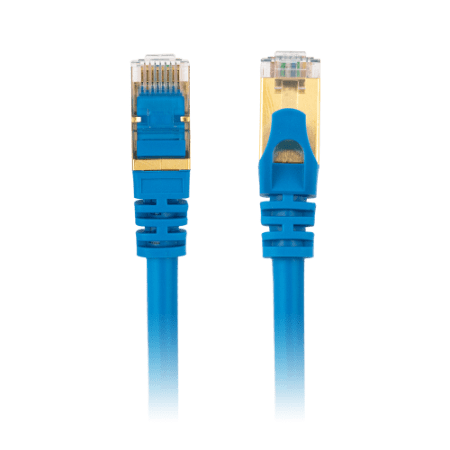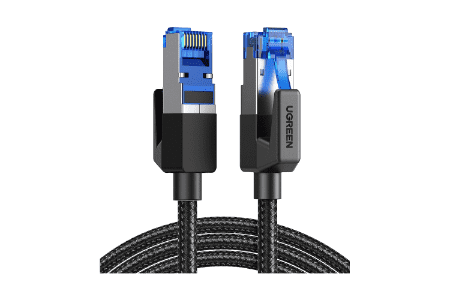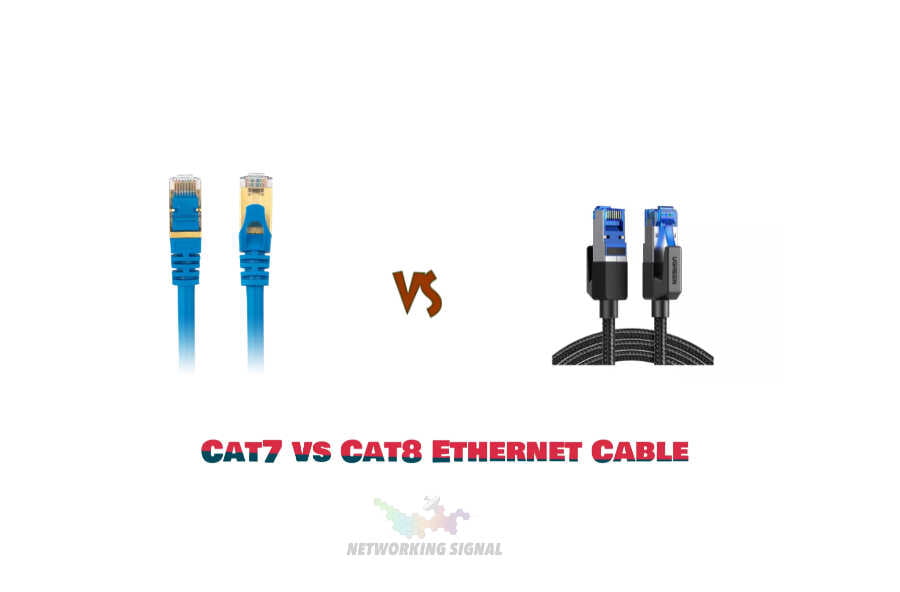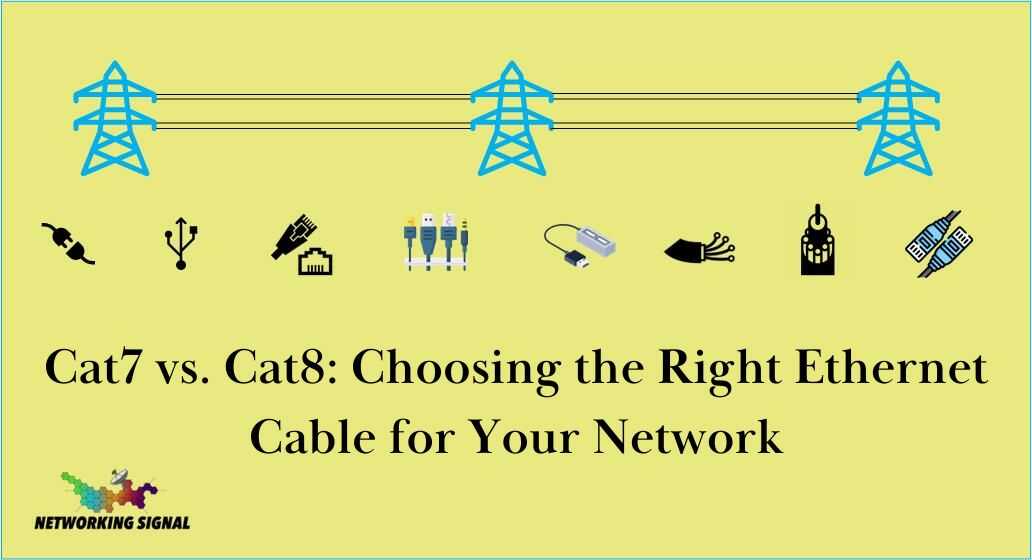In today’s fast-paced digital world, having a reliable and efficient network connection is crucial. Ethernet cables play a significant role in ensuring high-speed and stable internet connectivity.
As technology advances, newer cable standards are introduced to meet the growing demands of modern networks. Two such standards that have gained popularity are Cat7 and Cat8.
In this article, we will compare and contrast Cat7 and Cat8 cables to help you make an informed decision when choosing the right cable for your network needs.
Ethernet cables are used to connect devices within a Local Area Network (LAN) or Wide Area Network (WAN). These cables transmit data signals between devices such as computers, routers, switches, and servers.
Different categories of Ethernet cables are designed to support varying speeds and performance levels. Cat7 and Cat8 are part of the newer generations of Ethernet cables that offer enhanced capabilities compared to their predecessors.
What is Cat7?

Cat7, also known as Category 7 Ethernet cable, is a high-performance cable designed to support Gigabit Ethernet and beyond. It provides improved speed, bandwidth, and reduced interference compared to earlier cable categories. The key features and benefits of Cat7 include:
Look Here:
Enhanced Speed and Bandwidth
Cat7 cables are capable of supporting speeds up to 10 Gigabits per second (Gbps) over distances of up to 100 meters. This makes them suitable for bandwidth-intensive applications such as video streaming, online gaming, and data-intensive tasks.
Reduced Interference and Crosstalk
Cat7 cables are equipped with shielding and twisted pair construction that minimizes electromagnetic interference (EMI) and crosstalk. This ensures a stable and reliable connection, even in environments with high levels of electrical noise.
Shielding for Improved Performance
Cat7 cables use individual shielding for each twisted pair and an overall shield around all pairs. This shielding provides additional protection against external interference, resulting in better signal quality and improved overall performance.
What is Cat8?

Cat8, or Category 8 Ethernet cable, represents the latest advancement in Ethernet cable technology. It is designed to support data transfer rates of up to 40 Gbps and offers improved performance and shielding capabilities. Let’s explore the features and benefits of Cat8:
Look Here:
Higher Data Transfer Rates
Cat8 cables are built to handle higher data transfer rates than Cat7 cables. With speeds of up to 40 Gbps, Cat8 is ideal for data centers, server farms, and other high-demand networking environments where ultra-fast data transmission is required.
Improved Shielding and Reduced Crosstalk
Cat8 cables feature enhanced shielding and stricter specifications for crosstalk and EMI. This ensures minimal signal interference and better signal integrity, resulting in reliable and consistent network performance.
Future-Proofing Your Network
Investing in Cat8 cables offers future-proofing for your network infrastructure. As technology continues to advance, Cat8 cables have the potential to support even higher speeds and bandwidths, making them a wise choice for long-term network planning.
Look Here:
Cat7 vs Cat8: Speed and Bandwidth
When it comes to speed and bandwidth, both Cat7 and Cat8 offer significant improvements over older cable categories. Cat7 cables support speeds of up to 10 Gbps, while Cat8 cables take it a step further with speeds of up to 40 Gbps.
If you have high-demand applications or anticipate future bandwidth requirements, Cat8 provides a more robust solution.
Look Here:
Cat7 vs. Cat8: Performance and Interference
In terms of performance and interference, both Cat7 and Cat8 cables excel. Cat7 cables utilize shielding and twisted pair construction to minimize interference and crosstalk, ensuring reliable signal transmission.
Cat8 cables, with their stricter specifications and improved shielding, offer even better performance and signal integrity, making them suitable for demanding environments.
Cat7 vs Cat8: Shielding and Compatibility
Cat7 cables feature individual shielding for each twisted pair and an overall shield, providing excellent protection against external interference.
Cat8 cables further improve on this with enhanced shielding capabilities. It’s important to note that Cat8 cables are backward compatible with lower-category cables, allowing for seamless integration into existing networks.
Cat7 vs. Cat8: Cost and Availability
As with any new technology, cost and availability are factors to consider. Cat8 cables, being the latest standard, are generally more expensive compared to Cat7 cables.
Additionally, Cat8 cables may not be as widely available as Cat7 cables, especially in retail stores. However, as the demand for Cat8 increases, prices are expected to become more competitive, and availability will improve over time.
Which Cable Should You Choose?

The choice between Cat7 and Cat8 depends on your specific network requirements and budget. If you need high-speed connectivity and anticipate future bandwidth demands, Cat8 is a recommended option.
However, if you require reliable Gigabit Ethernet performance and want a more cost-effective solution, Cat7 is a solid choice.
Consider factors such as the nature of your network usage, the distance between devices, and your long-term network plans when making a decision.
Look Here:
FAQs
Are Cat7 and Cat8 cables backward compatible with older Ethernet standards?
Yes, both Cat7 and Cat8 cables are backward compatible with older Ethernet standards. They can be used with devices that support lower-category cables, ensuring compatibility within your network infrastructure.
Can Cat7 and Cat8 cables be used for long-distance connections?
Yes, Cat7 and Cat8 cables are capable of supporting long-distance connections. Cat7 cables can transmit signals up to 100 meters, while Cat8 cables can reach distances of up to 30 meters. Consider your specific distance requirements when selecting the appropriate cable.
Do Cat7 and Cat8 cables require special connectors or equipment?
Cat7 and Cat8 cables use the standard RJ-45 connectors, which are widely used in Ethernet connections. You can use these cables with existing equipment that supports Ethernet connectivity without the need for special connectors.
Can I mix Cat7 and Cat8 cables within the same network?
Yes, it is possible to mix Cat7 and Cat8 cables within the same network. However, it’s important to consider the limitations and capabilities of each cable type and ensure proper compatibility with your network devices.
Can I use Cat7 or Cat8 cables for outdoor installations?
Cat7 and Cat8 cables are primarily designed for indoor installations. If you require Ethernet connectivity for outdoor applications, it is recommended to use cables specifically rated for outdoor use, such as direct burial or outdoor-rated Ethernet cables.
Conclusion
Choosing the right Ethernet cable is essential for achieving optimal network performance.
Cat7 and Cat8 cables offer significant improvements over older cable categories, providing faster speeds, higher bandwidths, and enhanced shielding capabilities.
Assess your network requirements, weigh the pros and cons of Cat7 and Cat8, and make an informed decision based on your specific needs. By selecting the right cable, you can ensure a reliable and efficient network connection for your home or business.

